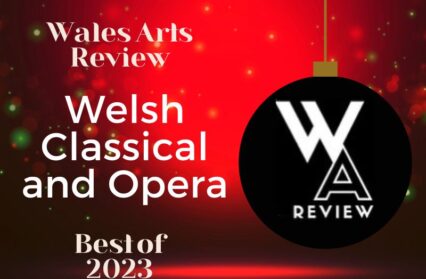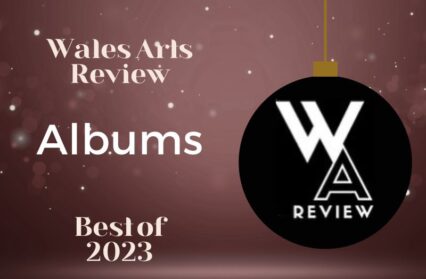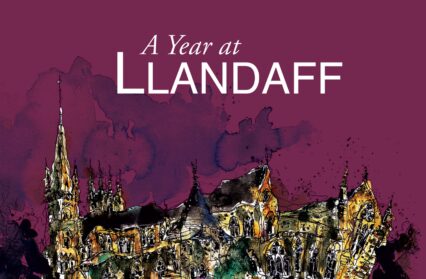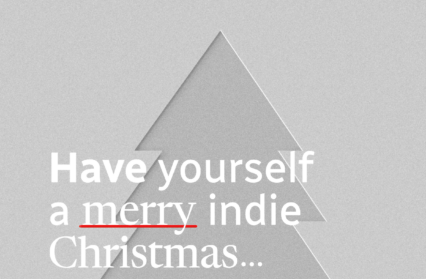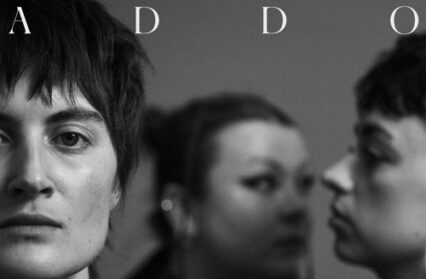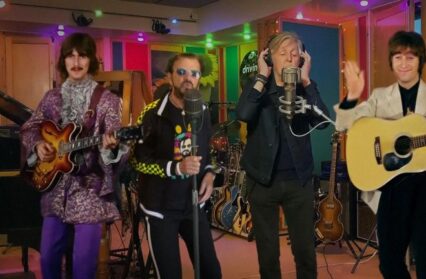An exciting development in contemporary classical music in Wales will take place this week in Cardiff, when ten composers active here will have commissions performed by a new ensemble. Nigel Jarrett places the concert at Chapter Arts Centre on Friday in its historical context.
Outside metropolitan centres, contemporary music can often seem embattled. Mainstream concert-going throughout the West continues to rely heavily on music by the proverbial ‘dead white men’ while music written by living composers tends to attract small, enthusiastic audiences. Even now, changes wrought by diverse composers such as Stravinsky and Schoenberg in the early part of the 20thcentury are still off the radar for many concertgoers. Not every composer followed their lead, but they and other innovators opened up possibilities of writing music radically different from what pertained in the 19thcentury and before.
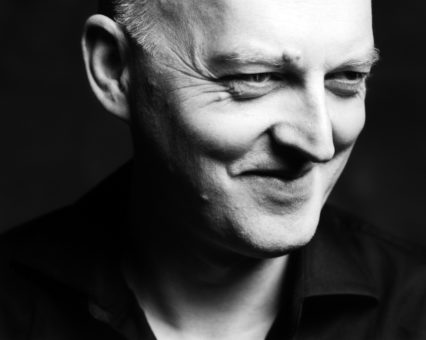
This is why much contemporary music asks to be assessed on its own terms and not necessarily in comparison with models from the distant past. In Wales, those most encouraging of contemporary composers over the years – both Wales-based and those from further afield – have included the Vale of Glamorgan Festival, the BBC National Orchestra of Wales and Music Theatre Wales, the touring chamber opera group co-founded by Michael Rafferty and Michael McCarthy, which has gained an international reputation. Rafferty has now moved on from MTW and taken his commitment to new music a stage further by forming Uproar, a 12-member instrumental ensemble, with whom he aims to bring freshly-minted music by Welsh composers and others to audiences with a thirst for the contemporary thus far only partly assuaged.
Uproar’s inaugural appearance, 10 x 10, will be nothing if not ambitious. At Chapter Arts Centre in Cardiff on Friday October 26 music commissioned from no fewer than ten Welsh or Wales-based composers will be performed. Each piece will last about five minutes. It will probably be the first time such a wide conspectus of who’s active in composition in Wales has been represented. Not everyone is there, of course, partly because ten is ten and they were chosen, according to the project organisers, ‘for their…track records of performances, commissions, critical acclaim and awards’. They include composers at the start of their careers and those more or firmly established. And whether composers describe themselves as Welsh (and writing ‘Welsh’ music) or as composers working in Wales is probably a matter for the composers themselves. The commissioning policy had to depend on what Rafferty calls ‘fairness of approach’.
He says, ‘Naturally, as the ten have been selected by me, there is bound to be some personal bias but all the composers chosen have already achieved recognition elsewhere. Quality of composition and performance is important for the success of the group.
‘For the opening concert, I wanted to celebrate the music that is currently being written in Wales, and which would generally fall into the category Contemporary Classical Music. Having first thought I should choose one composer, it felt like such a choice would polarise people’s expectations for future concerts. So I started thinking of two or three – but even these numbers seemed very selective. The number ten came from wanting to open the field as widely a possible. So I tried to get a geographical spread of composers – working in North, South, West and mid Wales, with a wide age range (late 20s to early 70s) and include equal numbers of men and women.
‘These are not the only composers I could have chosen, but the idea was to make a start. If the format is successful, we might try to repeat the project in two or three years. The aim is to bring international, recognised works to Wales and to take music written in Wales to the wider world, putting it into an international context.
Rafferty’s ten are: Andrew Lewis, Sarah Lianne Lewis, John Metcalf, Carlijn Metselaar, Gareth Moorcraft, Maja Palser, Michael Parkin, Lynne Plowman, Steph Power and Guto Puw.
Carlijn Metselaar’s Night Parade of Monsters arose from her interest in fantastic images in paintings. She was inspired to compose a playful piece for a group of ‘brilliant’ performers.
John Metcalfe’s Air an Aria is shaped by two aspects: an interest in strict musical structures (here the palindrome), and the desire to celebrate the new ensemble.
Steph Power’s Semaphore explores momentum and stasis in a short time frame. Her title refers to the process of composing, which often for her seems to flag up tricky areas deep within the psyche.
Gareth Moorcroft’s Cycles is a collection of four miniature movements based on the same melodic idea but seeking to present it in a completely different way.
Andrew Lewis’s Étude aux Objets is borrowed from Pierre Schaeffer, who conducted some of the first experiments in sonic art. Rather than developing them, he assembles his musical ‘objects’ more or less at random.
Michael Parkin’s Murmurations derives from his interest in birdwatching, particularly in this case starling roosts. He’s interested in the sounds these populous flocks make of all kinds, and the piece requires the performers to be as virtuosic as the birds are acrobatic.
Lynne Plowman’s UP is inspired by the soprano trombone played by one of Uproar’s musicians. Its spurts of energy are punctuated by moments of stillness and calm, but the energy is ultimately unstoppable.
Sarah Lianne Lewis’s Mind the Gap arises from the different pitches created by garbled Tannoy announcements on the London Underground. The finished piece is ‘a bit raucous’ and a lot louder than a lot of her recent music.
Maja Palser’s Aus dem Leeren is based on her belief that sound’s directness is comparable to touch. It uses a lot of repetition which, again, is connected to breath and pulse and specific types of touch, including the caress.
Guto Puw’s Uwchsonig (Ultrasonic) is inspired by the sound waves that are beyond normal human hearing and used in medical imaging. It’s a musical analogy of the process: often isolated chords are ‘sent and received’ and eventually converted to generate static, sustained pitches.
Uproar are: Joanna Shaw (flute), Michael Whight (clarinet), John Orford (bassoon), Torbjorn Hultmark (trumpet), Douglas Coleman (trombone), Julian Warburton (percussion), Lucy Wakeford (harp), Miranda Fulleylove (violin), Philippa Mo (violin), Fiona Winning (viola), Sally Pendlebury (cello), and Kenneth Knussen (bass).
The music is designed to allow the composers to experiment with material that might later form the basis of longer, more elaborate works. A site-specific version of the concert will be held at the Bangor Music Festival in February, when the instrumentalists will be distributed in the space offered by the Pontio atrium.
Rafferty says Wales has long been in need of a large-scale ensemble dedicated to contemporary classical music. ‘We are delighted to fulfil this gap in music provision,’ he says. ‘Our opening concert will celebrate the rich culture of composition happening now in Wales. Future projects will bring vibrant new international work to Wales, giving its people opportunities to experience music which they would otherwise have to travel to Birmingham, London or further afield to hear.’ It’s a point also made by composer Robert Fokkens, a senior lecturer at Cardiff University’s School of Music: ‘Uproar will at last provide Cardiff and Wales with a dedicated, high-profile contemporary music ensemble in the manner of the London Sinfonietta and the Birmingham Contemporary Music Group.’
The ensemble’s musicians are drawn from those who have worked with Rafferty for more than 25 years, and have thus encountered the music of composers such as Harrison Birtwistle, Philip Glass and Peter Maxwell Davies. Rafferty intends the ensemble to be collaborative in future projects incorporating dance, theatre, the visual arts and electronics.
One of the ten composers, Steph Power says Uproar promises to be an exciting new platform for composers and listeners in Wales and beyond at a time when the arts are increasingly vital yet under threat. ‘Artistic diversity and inclusion are matters of cultural health, both individually and collectively,’ she says.’ It’s especially important that, with music education being eroded in so many places, young people get the opportunity to hear top-quality contemporary music-making across the stylistic spectrum.’
Getting music-lovers to turn out in droves for what is innovative and challenging in contemporary sounds may involve low expectation; raising it demands presentations that are as adventurous as the music being performed. Uproar, in linguistic terms alone, might do the job.
Tickets for the Cardiff concert are available from Chapter Arts Centre on 02920 304400, or on line at www.chapter.org
There’s more information about Uproar on its website, www.uproar.org.uk


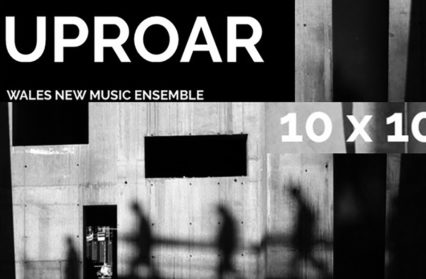
 Enjoyed this article? Support our writers directly by buying them a coffee and clicking this link.
Enjoyed this article? Support our writers directly by buying them a coffee and clicking this link.

